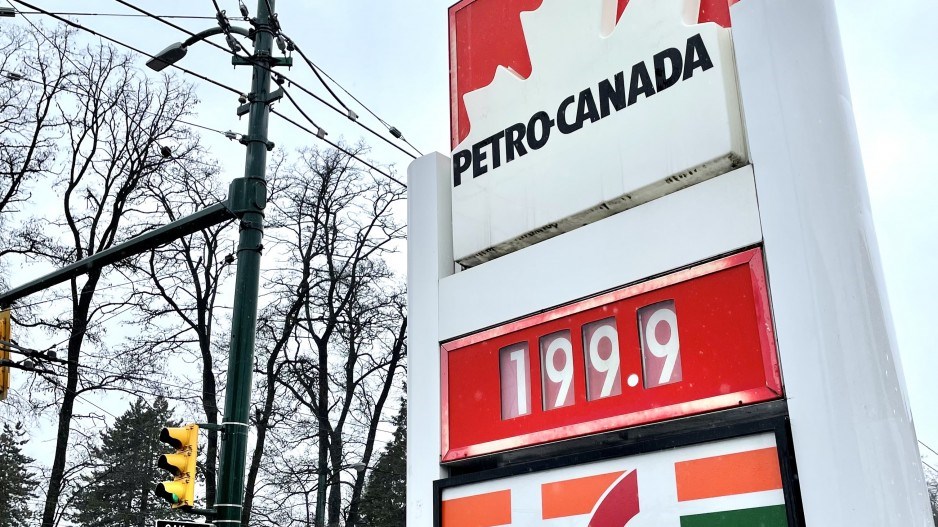B.C.’s carbon tax increased today by $5 per tonne, bringing it in line with federal carbon pricing for the first time and adding one cent to a litre of gasoline.
But according to GasWizard, average gasoline prices in Metro Vancouver should actually start dropping by about four cents per litre by tomorrow, if they haven’t already, thanks, in part, to global oil prices being tempered by the announced release of strategic oil reserves in the U.S.
Today, B.C.’s carbon tax increased from $45 per tonne of CO2 to $50, while the federal backstop rose by $10, from $40 to $50 per tonne. For the first time, B.C.’s carbon taxes are harmonized with other parts of Canada.
B.C. was the first jurisdiction in North America to implement a carbon tax, and until today it had the highest carbon pricing in Canada. The Trudeau government implemented a federal carbon pricing scheme that applies in provinces that didn’t already have either a carbon tax or some other form of carbon pricing, like cap-and-trade.
Starting next year, B.C.’s carbon tax will need to double its increase to match federal pricing – an increase of $10 to $60 per tonne.
The federal carbon pricing backstop – which applies to provinces that don’t have their own carbon pricing – is scheduled to rise by $10 a year until it hits $170 per tonne by 20230.
That means B.C. will need to start increasing the annual carbon tax by $10 a year as well, starting next year, in order to harmonize with the federal pricing. The B.C. government has vowed to “meet or exceed” the federal carbon pricing.
B.C.’s carbon tax adds $0.11 to a litre of regular gasoline, $0.12 to a litre of diesel, and $0.09 to cubic metre to natural gas.
An even bigger impact for natural gas customers in B.C. is recent hikes in natural gas prices approved by the BC Utilities Commission (BCUC), which has approved requests from FortisBC to increase prices, since natural gas prices have roughly doubled in North America since a year ago – a reflection of a global energy crunch.
A mismatch in demand and supply for both oil and natural gas had already sent prices for both up, and when Russia invaded Ukraine, panic buying pushed global oil prices as high as US$130 per barrel.
They have since fallen to about US$100 per barrel. Yesterday’s announcement that the U.S. will release 1 million barrels of oil per day from its strategic oil reserves for the next six months – a total of 180 million barrels – shaved about $8 from a barrel of West Texas Intermediate (WTI) in a single day, according to oilprices.com.
As a result, gasoline prices should fall slightly over the next few days.
According to GasWizard, the price of regular gasoline in Vancouver should dip by about four cents to $1.91 per litre on Saturday.
According to GasBuddy, gasoline prices are already down by a few cents today in Metro Vancouver, with some prices as low as $1.87 per litre.
The release of strategic oil reserves in the U.S. is viewed by some analysts as a Band-Aid solution solution to soaring oil prices. The world is still about 2 million barrels of oil per day short of demand, and the loss of oil exports from Russia threaten to make the current energy crisis an enduring one. Much depends on how long the war in Ukraine lasts, and whether or not OPEC nations decide to step up oil production.
In its most recent commodity note, ScotiaBank Economics warns oil prices could continue to "whipsaw."
"Our base case projections assume that the geopolitical risk premium will keep oil prices very well supported this year," ScotiaBank notes.
Goldman Sachs likewise says a release of strategic oil reserves will offer temporary relief at the pumps, but not resolve "the structural supply deficit."




